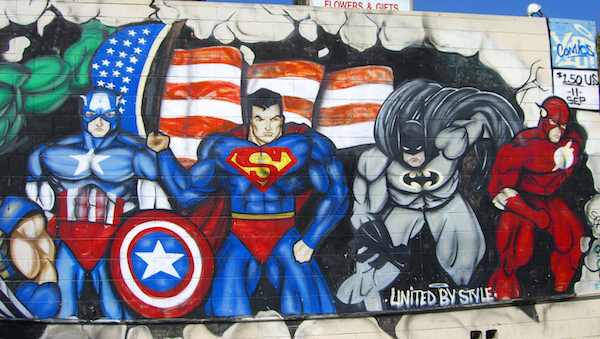
[Image above] Credit: mary; Flickr CC BY-NC-ND 2.0
Superheroes can do just about everything—but can they help explain materials science to undergraduate students?
ACerS member and awardee Ricardo Castro thinks so. Castro is leading a new class this winter quarter at the University of California, Davis that is all about the science behind superheroes.
“It’s a course that will show the students how you can make superheroes reality,” Castro says in an ABC10 (Sacremento, Calif.) video about the new course. Castro is a professor in the Department of Chemical Engineering and Materials Science at UC Davis. His lab, the Nanoceramics Thermochemistry Laboratory, studies concepts such as nanocrystalline materials’ grain boundaries.
Castro’s undergraduate course, born from a childhood love of comic books, is capitalizing on pop culture to communicate enthusiasm in materials science to young students. With the ubiquity of superheroes on silver screens and the rise of the comic industry, superhero culture represents a powerful medium to connect with young minds.
“Looking at teens’ excitement for the fantastic characters in superhero movies, I knew I wanted that enthusiasm in a classroom to learn about materials science. So I started deconstructing each character and found that most are really centered around materials science concepts,” Castro says in an email.
The class will dissect a variety of superheroes to teach undergraduate students basic concepts of materials science, Castro says. Iron Man, Captain American, Thor, Wolverine, and many others will be part of the lesson plan.
“I trust that bringing this strong superhero entertainment business into the classroom can engage students in materials science and technologies by inputting the so-needed passion,” Castro says.
That passion is so needed because of the degree of distraction in our lives today. “If I was a superhero, I’d like to have the power to make students like studying more than using Facebook—but I don’t think any superhero is so powerful,” Castro jokes.
In between reading Facebook posts, students in the course will examine superhero technologies in depth. For example, students will search for Iron Man’s power source, the mini arc reactor, “as this could potentially be a great solution for high energy demands,” Castro says. That translation from the screen to real life is what makes the course a powerful tool to talk to students.
“We link to real-life stuff in all cases. For instance, making a parallel between atomic batteries, which are used for satellites and tanks, and the arc reactor technology,” Castro says.
Those character and technology examples serve as accessible cases to communicate all key materials science concepts. “Crystalline structure and alloying are brought up when discussing Iron Man’s suit. Different kinds of strength as well as concepts of composites are introduced when talking about Captain America’s shield. Magnetic materials are introduced when discussing the arc-reactor. And even bio-compatibility is addressed in Wolverine’s lecture,” Castro says.
Watch the ABC10 video to hear more from Castro himself about the new course.
In addition to the UC Davis course, superheroes are showing up in science education in other places, too. For example, NSF’s new competition “Generation Nano: Small Science, Superheroes” encourages high school students to get creative with nanotechnology to conjure up a novel superhero. The winner of that competition will be announced at the 2016 USA Science & Engineering Festival in Washington, D.C., in April 2016. If you’re there, look for ACerS—we’ll be showing off materials science again!
Author
April Gocha
CTT Categories
- Education
- Material Innovations
Spotlight Categories
- Member Highlights


